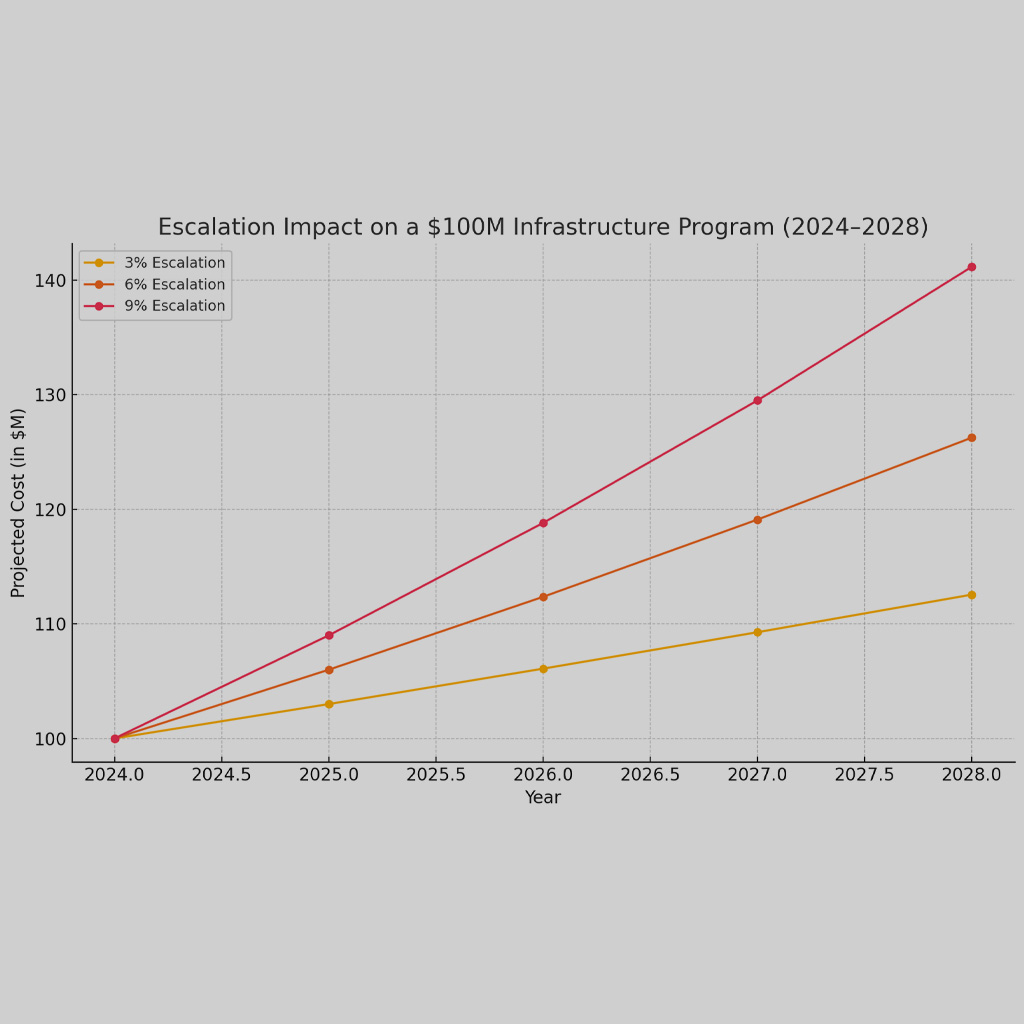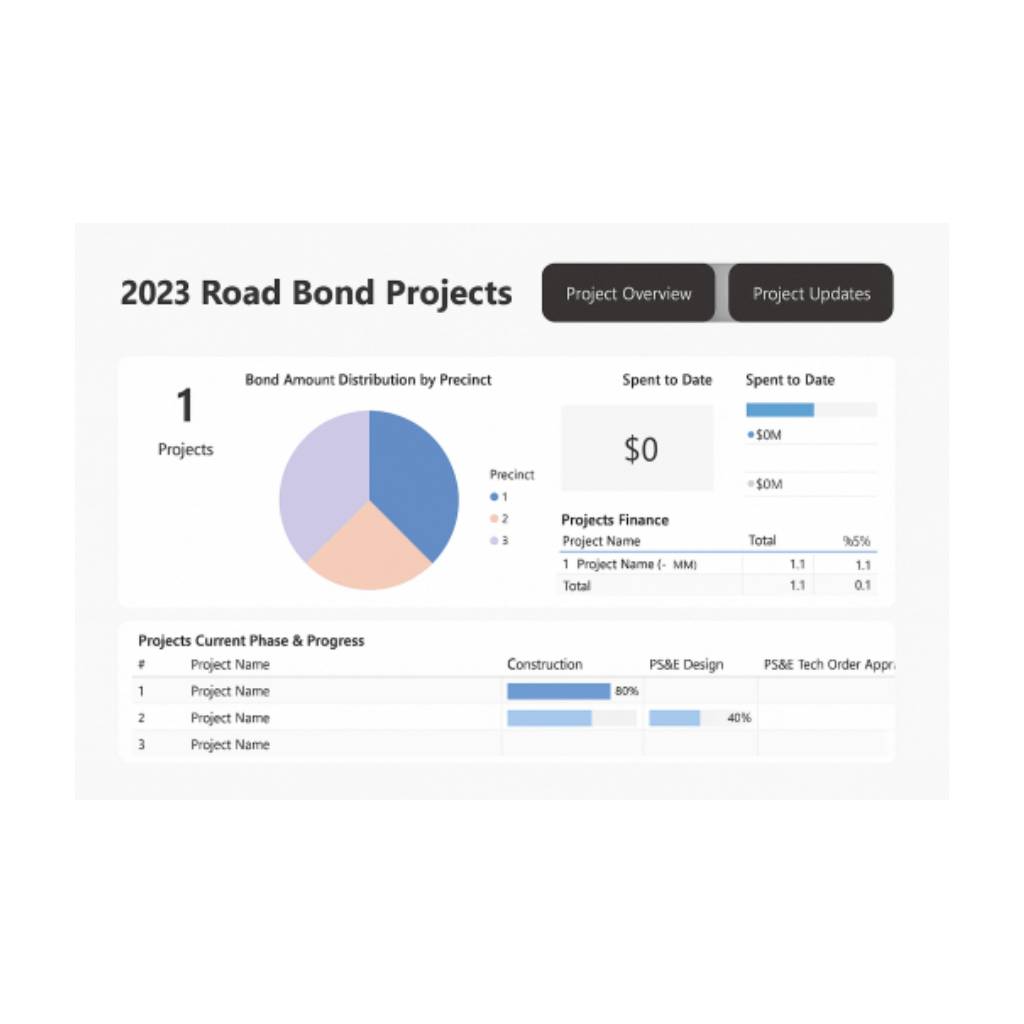“Great things are not done by impulse, but by a series of small things brought together.”
— Vincent van Gogh
From Blueprint to Reality: Unveiling the Timeline of Capital Improvement Projects
Capital improvement projects are the backbone of community development, transforming visionary ideas into tangible infrastructure that enhances our daily lives. Whether it’s building a new bridge, expanding a highway, or constructing a public facility, these projects are complex endeavors that require meticulous planning and execution. Understanding the timeline—from conception to commissioning—is crucial for stakeholders and the public alike. Let’s delve into each phase and explore the time considerations inherent in capital improvement projects.
- Conception (3-6 months)
Every project begins with an idea. The conception phase involves identifying a community need or opportunity. Government agencies, often in collaboration with public input, pinpoint areas requiring improvement or development. Feasibility studies and preliminary assessments are conducted to determine the project’s viability. This phase sets the foundation, outlining objectives, scope, and potential challenges.
- Solicitation of Design (2-4 months)
Once a project is deemed feasible, the next step is to solicit design services. This involves preparing and issuing a Request for Proposals (RFP) to attract qualified architects and engineers. The solicitation period includes advertising the opportunity, hosting pre-proposal meetings, and allowing time for firms to prepare detailed submissions. A competitive selection process ensures the project benefits from innovative ideas and cost-effective solutions.
- Design Phase (6-18 months)
The design phase is critical and time-intensive. It includes:
- Preliminary Design: Developing initial concepts and schematics.
- Detailed Design: Creating comprehensive blueprints, specifications, and cost estimates.
- Regulatory Approvals: Submitting plans for permits and complying with environmental regulations.
Collaboration between designers, engineers, and stakeholders is essential to refine the project while adhering to codes and standards. The duration depends on project complexity; larger, more intricate projects naturally require more time.
- Right-of-Way Acquisition (6-24 months)
Acquiring the necessary land or property rights can be one of the most challenging aspects. This phase involves:
- Property Identification: Determining which parcels are needed.
- Appraisals and Negotiations: Valuing properties and negotiating purchases with owners.
- Legal Proceedings: If agreements can’t be reached, eminent domain may be pursued.
Timelines can extend due to negotiations, legal challenges, or relocation assistance for displaced residents and businesses.
- Utilities Relocation (3-12 months)
Existing utilities—water, gas, electricity, telecommunications—must often be relocated. Coordination with utility companies is crucial to plan and execute these moves without disrupting services. Unexpected underground obstacles or scheduling conflicts can cause delays. Early engagement with utility providers helps mitigate timing issues.
- Construction (12-36 months)
The most visible phase, construction, brings designs to life. Factors influencing the duration include:
- Project Scale: Larger projects take more time.
- Weather Conditions: Adverse weather can halt progress.
- Resource Availability: Labor and material shortages can cause setbacks.
- Site Conditions: Unforeseen issues like soil instability may arise.
Effective project management is essential to keep the project on schedule and within budget, employing strategies like critical path scheduling and regular progress monitoring.
- Substantial Completion (1-2 months)
At this stage, the project is functionally complete. The infrastructure can operate as intended, but minor work may remain. Inspections are conducted to ensure compliance with specifications. Any defects or omissions are identified, and contractors address them promptly. This phase is crucial for safety and performance verification.
- Final Acceptance (1 month)
Final acceptance is the formal acknowledgment that the project meets all contractual obligations. It involves a comprehensive review of all work, documentation, and warranties. Legal and administrative processes are completed, and final payments are made. This phase signifies the official handover from the contractor to the owner.
- Commissioning (1-3 months)
Commissioning ensures that all systems function correctly and efficiently. It includes:
- Testing and Calibration: Verifying that equipment operates as designed.
- Staff Training: Educating personnel on operation and maintenance.
- Documentation: Providing manuals and as-built drawings for future reference.
Commissioning is vital for complex facilities like hospitals or water treatment plants, where system failures can have significant consequences.
Total Estimated Duration: 2-6+ Years
Considering each phase’s potential time frame, a capital improvement project can take anywhere from two to six years or more. The wide range accounts for variations in project complexity, regulatory environments, funding mechanisms, and stakeholder engagement levels.
Why Do These Projects Take So Long?
- Regulatory Compliance: Navigating environmental laws, zoning regulations, and building codes requires thorough documentation and approvals, which can be time-consuming.
- Public Involvement: Community meetings, public hearings, and feedback periods are essential for transparency but can introduce delays if significant revisions are needed.
- Funding and Budget Constraints: Securing financing through bonds, grants, or budget allocations may face political and economic hurdles.
- Risk Management: Identifying and mitigating risks early prevents costly changes later but adds to the initial planning time.
The Importance of Patience and Diligence
While the extended timeline may seem burdensome, each phase plays a critical role in ensuring the project’s success. Rushing through steps can lead to errors, safety issues, increased costs, and public dissatisfaction. Thorough planning and execution yield long-term benefits, providing infrastructure that serves communities effectively for decades.
Conclusion
Capital improvement projects are monumental undertakings that shape the future of our cities and towns. Understanding the comprehensive timeline—from conception to commissioning—highlights the intricate processes involved. These projects require collaboration among government entities, private sector partners, and the public. Patience, transparency, and meticulous planning are key to transforming visionary concepts into lasting assets that enhance our daily lives.
By appreciating the time and effort invested in each phase, stakeholders and residents can better support and engage with the development processes that ultimately enrich our communities.













